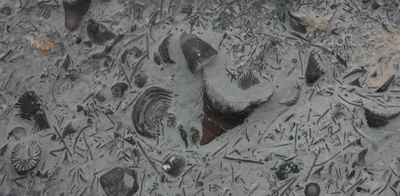
Fossils like these from Quebec’s Anticosti Island have shed light on the world’s first mass extinction, showing it was caused not by a single large glaciation but by many over a long period of time. (Photo credit: André Desrochers)
The world’s first mass extinction 444 million years ago was likely caused by a series of freeze-ups, and not a single massive ice age as previously thought. The extinction, which marks the boundary between the Ordovician and Silurian ages, wiped out 85 per cent of life in the oceans.
In the new paper, fossil records from Quebec’s Anticosti Island – which at the time would have been near the equator – were used to reconstruct a more detailed picture of rising and falling sea levels than has previously been possible. By correlating these results with records from Morocco – at the time, near the South Pole – the team demonstrated that several glaciations and de-glaciations happened at the time of the extinction event, rather than just one.
The results could help climate modellers predict the impacts of future changes to the earth’s biogechemical systems.
Original research paper published in Nature Communications on September 1, 2014.
Names and affiliations of selected authors
